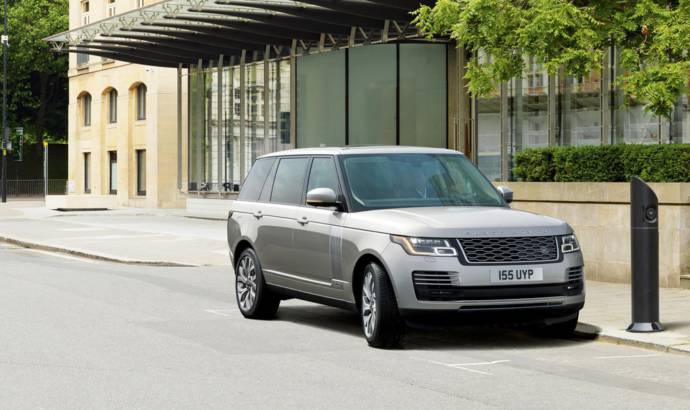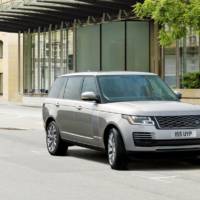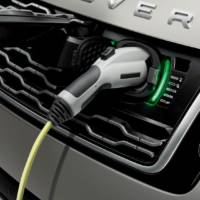Along with the 2018 version of the Range Rover, the UK manufacturer also introduced the first hybrid version of the luxury SUV. It is called simply Range Rover PHEV or badged P400e.
It combines an advanced 296hp four-cylinder Ingenium gasoline engine with a 114hp electric motor. This transformational technology is powered by an advanced 13.1kWh lithium-ion battery giving a total available power output of 398hp from the permanent four-wheel drive (4WD) system.
Together they drive the SUV from 0-60mph in just 6.4 seconds (0-100km/h in 6.8 seconds) for SWB variants and to a top speed of 137mph[5]. With an impressive 472-lb. ft. of torque, the new powertrain mixes dynamic and sustainable performance with traditional Range Rover capability, comfort and refinement.
The combination of Ingenium gasoline and electric power can be used in two driving modes: Parallel Hybrid mode (the default driving mode) and EV (Electric Vehicle) mode.
In Parallel Hybrid mode the 2019 PHEV model can combine the two power sources to deliver efficient performance. By using its electrical energy reserves the P400e is able to offer the power of a Range Rover.
On longer journeys, customers can use the SAVE function to deploy the EV-only range for a specific part of their journey, for example, when entering congested urban areas, while the Predictive Energy Optimization function uses the vehicle’s Navigation system to enhance fuel efficiency.
In EV mode the P400e can be driven up to 31 miles (51km) with zero-emissions when fully charged. This driving mode is manually selected using a button on the console and gives the new PHEV model a top speed of 85 mph (137km/h) when using only EV power.
The intelligent system can also capture and store the energy generated when braking to help recharge the battery.
The 2.0-liter Ingenium engine can be found under the clamshell hood, with the 85kW electric motor housed on the transmission, at the center of the vehicle.
The access point for the 7kW on-board charging socket is located behind the Land Rover badge to the right of the grille, at the front of the vehicle, while the 13.1 kWh prism-shaped lithium-ion battery is mounted at the rear beneath the trunk floor.
The new 2019 Range Rover PHEV model features a plug-in charge point behind a discreet panel on the grille, a 7kW on-board charger, and a charging cable. Based on market and type of hardware used, the Range Rover P400e is suited to deliver full battery charging overnight using a domestic plug socket.
Owners can monitor the charging status via two illuminated strips that sit either side of the charging socket behind the grille. A white light signifies the vehicle is connected but indicates that charging has not started, while a blue light shows that timed charging is set but not underway. A flashing green signal shows the car is charging, while a solid green light indicates the battery is fully charged.





